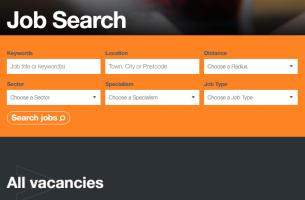
Mark Nesbit
May 23, 2025
How employers’ can overcome AI use for competency-based interviews
As the use of AI becomes increasingly common in the workplace, its presence is also being felt in the hiring process, particularly in how candidates prepare for competency-based interviews. While AI tools like ChatGPT and presentation generators offer time-saving benefits, their use to produce interview presentations can create challenges for employers seeking genuine insights into a candidate’s experience and capability.
This is especially true in senior roles across Logistics, Supply Chain, HR, and Sales, positions where strategic thinking, real-world examples, and communication style are vital. So, how can organisations ensure authenticity to get a true measure of candidates in the age of AI?
Why It Matters
Competency-based interviews are designed to draw out real examples of past behaviour: how someone has led a team during peak season, negotiated transport contracts under cost pressure, or solved a production bottleneck.
When candidates rely heavily on AI to craft presentations, it can:
- Obscure their true experience
- Inflate communication or strategy skills
- Mask their true working style
- Prevent employers from making fully informed hiring decisions
In logistics and manufacturing sectors, where decisions impact entire operations, authenticity matters.
1. Set Clear Expectations Around Originality
From the outset, be clear in your interview brief that the presentation should reflect the candidate’s own thinking, experience, and approach. You might state, for example:
“We expect presentations to be original and a reflection of your personal experience. We welcome visual support tools, but the content should represent your authentic thinking and delivery style.”
This simple step sets the tone and helps manage expectations about the use of AI.
2. Tailor the Presentation Brief
Generic topics are easier to outsource to AI tools. To counter this, tailor briefs around real business scenarios or recent strategic challenges relevant to your organisation. For example:
- Logistics: “Describe how you would manage a warehouse workforce during a period of industrial disruption.”
- Supply Chain: “Explain how you’ve improved supplier performance during a time of material shortages, and how that approach could be applied here.”
- HR: “Share how you’ve embedded culture change post-merger, and outline how you would do it in our environment.”
- Sales: “Demonstrate how you would build a pipeline from scratch in a new market and what metrics you'd use to gauge success.”
These types of briefs require real-world thinking and context, much harder for AI to fabricate convincingly.
3. Ask Probing, Follow-Up Questions
If you suspect a presentation may have been aided by AI, ask deeper, experience-based follow-up questions such as:
- “Can you walk us through the specific decision-making process you used here?”
- “What would you have done differently in hindsight?”
- “Tell us about the results, how did this impact your organisation?”
AI-generated answers often lack depth and personal nuance. Probing questions help distinguish between learned responses and personal experience.
4. Assess Delivery, Not Just Content
AI may help build beautiful slides, but professional roles demand confident communication, presence, and storytelling ability. Pay close attention to:
- How they explain their thinking processes
- Whether they can pivot when questioned
- Their use of real examples and metrics
These cues can help you in identifying AI-written content in candidate presentations, particularly when responses feel rehearsed or disconnected.
5. Consider On-the-Spot Tasks or Work-Based Simulations
To further level the playing field, consider giving candidates part of the brief during the interview itself, allowing limited prep time to assess their ability to think on their feet. For instance:
- Ask them to outline a quick plan for resolving a late delivery scenario
- Ask them to talk through a supplier negotiation strategy based on minimal briefing info
This method promotes fairness and helps you observe how candidates think on their feet, another layer of authenticity AI can’t easily replicate.
As AI becomes more prevalent in job-seeking tools, it’s up to employers to refine their interview process. By asking the right questions, creating tailored briefs, and focusing on delivery as much as content, you can retain competency-based interview integrity in your roles.
Authenticity in hiring doesn’t just protect your process, it ensures the employees you bring in can genuinely deliver.
Want to understand which skills are in demand in Procurement, Supply Chain, Buying, HR and Sales in 2025? Need to benchmark specialist roles in your business?


